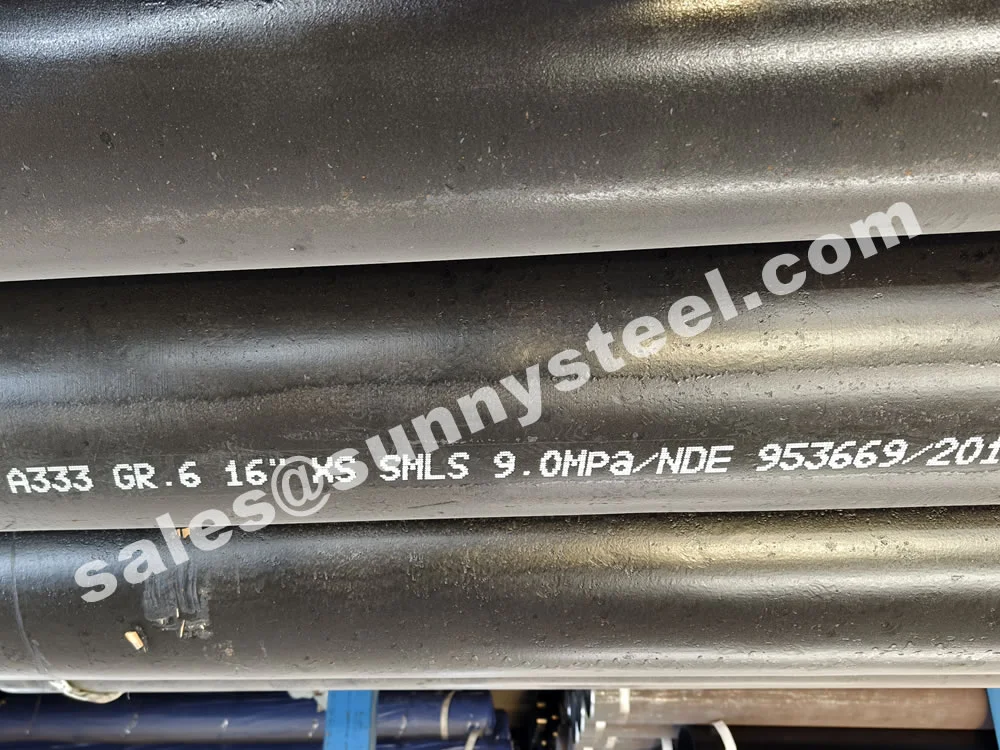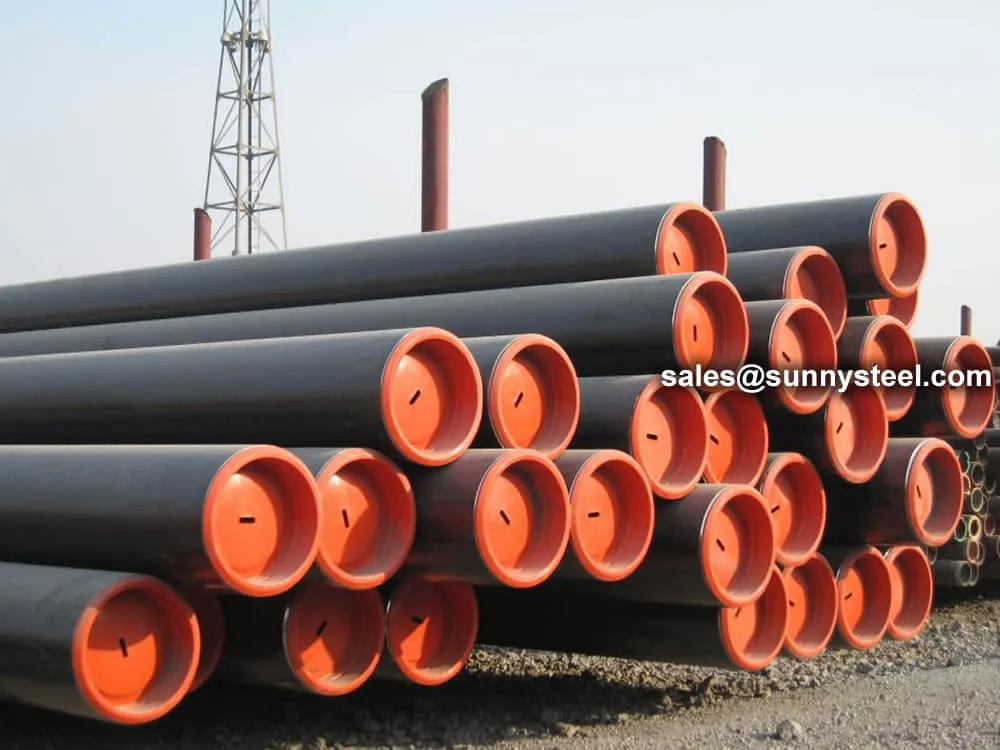
Astm a333 grade 6 seamless carbon steel pipe offers exceptional toughness for low-temperature applications down to -45°c, ideal for cryogenic and industrial piping systems.
Astm a333 grade 6 seamless carbon steel pipe offers exceptional toughness for low-temperature applications down to -45°c, ideal for cryogenic and industrial piping systems.
ASTM A333 Grade 6 Pipe and SA 333 Gr 6 Seamless Pipe are premium low-temperature carbon steel pipes engineered for superior performance in cryogenic conditions down to -45°C (-50°F). Compliant with ASTM A333/ASME SA333 standards, these pipes are designed for industrial piping solutions and boiler pipeline protection in demanding sectors like oil and gas, petrochemical, and power generation. The seamless construction ensures high toughness, durability, and resistance to brittle fracture, making them ideal for cryogenic piping applications.
The ASTM A333 Grade 6 Seamless Pipe is produced through hot-rolling or cold-drawing processes, ensuring a uniform structure with no welded seams. Its chemical composition, with low carbon (≤0.30%) and high manganese (0.29-1.06%), enhances weldability and impact resistance, critical for low-temperature environments. Available in sizes from 1/8” to 48” (DN6 to DN1200), with wall thicknesses ranging from SCH 10 to SCH XXS, these pipes meet diverse project specifications. Custom lengths up to 18 meters and end types (plain, beveled, or threaded) provide installation flexibility.
These Low Temperature Steel Pipes undergo stringent testing, including impact tests at -45°C, tensile, hydrostatic, and nondestructive electric tests, to ensure compliance with ASTM A333 standards. With a minimum tensile strength of 415 MPa and yield strength of 240 MPa, they deliver reliable performance under high-pressure and low-temperature conditions. Surface treatments like 3LPE, FBE, or galvanizing enhance corrosion resistance, making them suitable for transporting corrosive fluids or abrasive materials in petrochemical and oil and gas pipelines.
The SA 333 Gr 6 Pipe excels in applications such as LNG plants, subsea drilling, and refrigeration systems, where extreme cold can cause pipeline contraction or embrittlement. Its low carbon content minimizes weld cracking, with recommended preheating (150-200°C) for optimal welding. Compared to ASTM A106 pipes, which are designed for high-temperature service, A333 Grade 6 is optimized for low temperature steel pipe applications, offering superior toughness and cost-effective durability for industrial piping solutions.
Addressing challenges like pipeline wear and thermal stress in cold environments, the ASTM A333 Grade 6 Pipe ensures safety, longevity, and reduced maintenance costs. Its versatility extends to structural uses in construction and mechanical engineering, making it a top choice for engineers seeking reliable cryogenic piping solutions. With high impact resistance and moderate corrosion resistance, these pipes provide unmatched performance in harsh industrial settings.
| Element | Composition (%) |
|---|---|
| Carbon (C) | ≤ 0.30 |
| Manganese (Mn) | 0.29–1.06 |
| Phosphorus (P) | ≤ 0.025 |
| Sulfur (S) | ≤ 0.025 |
| Silicon (Si) | ≥ 0.10 |
| Nickel (Ni) | ≤ 0.40 |
| Chromium (Cr) | ≤ 0.30 |
| Copper (Cu) | ≤ 0.30 |
| Property | Value |
|---|---|
| Tensile Strength | ≥ 415 MPa |
| Yield Strength | ≥ 240 MPa |
| Elongation | ≥ 30 % |
| Impact Toughness | ≥ 27 J @ –100 °C |
| Hardness | ≤ 241 HBW |
| Standard | Pipes | Buttweld Fittings | Forged Steel Fittings | Valves | Bolts and Nuts |
|---|---|---|---|---|---|
| Low Temp Carbon Steel | A333 GR6 | A420 WPL6 | ASTM A350 LF2 | A352 LCB | A320 Gr L7 / A194 Gr 7 |
The equivalent grade to ASTM A333 GR6 is often EN 10216-4 P265NL or DIN 17173 TT St 35N. These grades share similar mechanical properties and are suitable for low-temperature service applications.

ASTM A333
Low temperature pipe refers to pipes specifically designed to withstand and operate effectively in environments with low temperatures, typically below 0°C (32°F).
These pipes are often used in industries such as oil and gas, petrochemicals, and refrigeration, where fluids need to be transported or stored at low temperatures. They are constructed from materials that can maintain their mechanical properties and structural integrity even in extremely cold conditions, ensuring the safe and efficient transportation of fluids. Additionally, low temperature pipes are insulated to prevent heat transfer and maintain the desired temperature of the fluid being transported.
Compared with austenitic stainless steel and duplex stainless steel, there are many comprehensive advantages of ferrite alloy steels for low temperature service, such as higher strength, better rigidity and lower expansion coefificient. There is not only better stability but aslo higher heat transfer efficiency. Tube & pipe for low-temperature service can be widely used in low temperature engineering. ASTM/ASME A/SA-333 Grades allow for cold temperature service to minus 150 degrees F. Material is always provided in the normalized condition at a minimum and Charpy Impact tested to a specific temperature range to assure compliance with the required service temperature.
Exceptional performance at temperatures down to -45°C with superior notch toughness and impact resistance.
Fine-grain structure with uniform carbide dispersion prevents brittle fracture in cryogenic conditions.
Economical alternative to exotic materials while providing reliable low-temperature performance.
Good weldability using conventional processes with minimal post-weld heat treatment requirements.
Precise control of chemical composition using electric arc furnaces with advanced ladle metallurgy techniques. Vacuum degassing reduces hydrogen content and eliminates inclusions.
Seamless pipes manufactured using hot piercing and rolling. Welded pipes produced using ERW or SAW processes with strict welding parameter controls.
Controlled heat treatment including normalizing at 815°C (1500°F), quench and temper, or stress relief to achieve optimal microstructure and properties.
Comprehensive testing including chemical analysis, mechanical testing, Charpy V-notch impact testing, hydrostatic testing, and non-destructive examination.

ASTM A333 Grade 6 Seamless Carbon Steel Pipe is widely used in industries requiring excellent high-temperature, high-pressure, and corrosion-resistant performance.
Used in boilers, superheaters, and steam lines in thermal and nuclear power plants.
Ideal for hydrocarbon processing, ethylene cracking, and heat exchanger units.
Used in LNG pipelines, storage tanks, and vaporization equipment for cold media.
Ensures excellent thermal conductivity and corrosion resistance in cyclic operations.
Handles high-pressure oil and gas in extraction, refining, and transportation systems.
Resists acidic and corrosive environments in reactors, scrubbers, and distillation units.